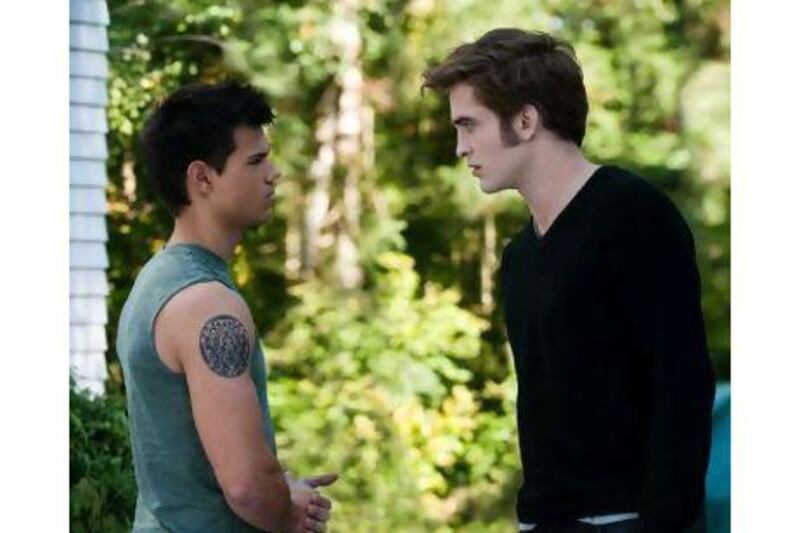This year, the 100 millionth book was sold in Stephenie Meyer's all-conquering Twilight series. The consensus is that the large majority of its sales were to teenagers consumed by the tale of a teenage girl who falls in love with a vampire. That may well be right, but it hid a more encouraging truth - teenagers are not simply the Facebook addicts of popular myth. They may have iPhones and send instant messages to their friends rather than actually see them. But they still, in their millions, take pleasure in one of the oldest cultural pursuits: opening a book and reading it.
Still, it was only a matter of time before somebody tried to combine a teenager's voracious appetite for social networking with their reading habits. And the result is the Figment website, which launches this month. Its co-creator, Jacob Lewis, admitted to The New York Times this week that he'd originally envisaged a site which was "the social network for young adult fiction", where young readers would connect with each other and find common ground in literature. But what he discovered was that, actually, they were more interested in a site where they could discover, read and share new work, and even upload their own stories.
So Figment now works as a highly-interactive library of new "young-adult fiction", and the submissions are generally rather good thus far, taking in genres such as science fiction, fantasy and romance. It's an intriguing idea, and it'll be interesting to see how influential Figment becomes. Lewis' intention is that it will both unearth talented teenage writers and become a space where, say, excerpts from the next big young-adult blockbuster are first published.
And if he can bring together these disparate strands with Figment, then he's on to a winner. It's only in the last 40 or so years that young adult fiction - books that specifically appeal to a 14-21 age group - has taken off. Of course, there are classics from before that time, specifically Mark Twain's two books with teenage protagonists, The Adventures of Tom Sawyer and Adventures of Huckleberry Finn. But it took the spectacular success of SE Hinton's 1967 novel The Outsiders for publishers to realise that there was an untapped market of teenagers who had grown out of childrens' books but felt that mainstream literature didn't speak to them about their issues or feelings.
It undoubtedly helped that Hinton was a teenager herself, setting her book in the midst of rival gangs at an American high school in a way that was real and urgent and not in the least bit patronising. And it sold millions. Indeed, its publisher, Viking, reckons The Outsiders is still bought by more than 500,000 young adults a year. It was telling that on its 40th anniversary, Hinton told the Associated Press that the sole motivation for writing it was that popular culture offered nothing to remind her of her own life at the time. "It was over-emotional, over the top, melodramatic," she said. "But its vices were its virtues, because kids feel that way."
Hinton then, was highlighting the clear difference between books specifically for young adults and books for everyone that happen to feature young adults. Essentially, that's where Harry Potter and Twilight differ - JK Rowling might have included some of the trials and tribulations of growing up in her saga, but they're in the margins of an adventure story that everyone can enjoy. Twilight is specifically about the choices you encounter as an adolescent. And if you're truly looking for an imaginative, intelligent young adult fantasy series which combines both the melodrama of Twilight with a Harry Potter-style quest, then Philip Pullman's His Dark Materials trilogy is just about unbeatable.
Still, it is a misnomer that all young adult fiction has to be fantasy. One of the best teenage novels of this year is Marcus Sedgwick's White Crow, a gothic story featuring two girls on the spooky Suffolk coast which also deals with religion and friendship. And when it was published, Sedgwick told The Guardian "there is almost nothing you can't tackle in a teenage novel, it's just how you do it".
So while in the past the more controversial young adult authors such as Melvin Burgess, Jonathan Trigell and even the ubiquitous Judy Blume (who is something of a rite of passage for teenage girls) have been criticised for corrupting our youth with their edgy books dealing with current issues, it's clear that the people they're aimed at love them.
In fact, the only danger with the Figment website is that it will ghettoise young adult fiction just as it's beginning to be taken seriously. Will the teenagers its aimed at care? Probably not.
[ www.figment.com ]






